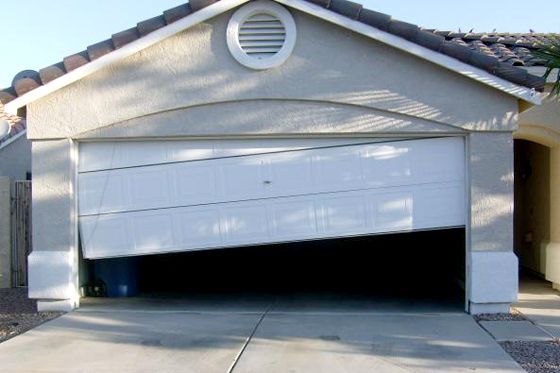[vc_row css_animation=”” row_type=”row” use_row_as_full_screen_section=”no” type=”full_width” angled_section=”no” text_align=”left” background_image_as_pattern=”without_pattern”][vc_column][/vc_column][/vc_row][vc_row css_animation=”” row_type=”row” use_row_as_full_screen_section=”no” type=”full_width” angled_section=”no” text_align=”left” background_image_as_pattern=”without_pattern”][vc_column][vc_empty_space height=”30px”][/vc_column][/vc_row][vc_row css_animation=”” row_type=”row” use_row_as_full_screen_section=”no” type=”full_width” angled_section=”no” text_align=”left” background_image_as_pattern=”without_pattern”][vc_column][vc_column_text]
A quick guide to how your home’s garage door works
[/vc_column_text][vc_column_text el_class=”intro”]Like most Perth homeowners, you probably have no idea how much you depend on your garage or roller door – until it needs repair! To make sure you never caught out, let’s get familiar with the whats, hows and whys of your garage door. Because time spent now will be money saved tomorrow.[/vc_column_text][vc_column_text]
Manual or automatic garage door?
Most homes have automatic garage doors, with most household sharing a few remotes. Automatic garage doors are hugely convenient because you can enter and exit your home without having to go outside, so you can conveniently shield yourself from the elements.
Your garage or roller door motor connects to the door through either a central ‘hockey arm’, or through direct drive (side motor, driving the door directly without the need for any poles or arms). The motor’s job is to command the open or close of your door. It’s fitted with:[/vc_column_text][icon_list_item icon=”fa-chevron-right” icon_type=”circle” title=”sensors to measure your door operation” icon_background_color=”#e85a05″][icon_list_item icon=”fa-chevron-right” icon_type=”circle” title=”start and stop speed features” icon_background_color=”#e85a05″][icon_list_item icon=”fa-chevron-right” icon_type=”circle” title=”travel limits to predetermine where your door stops and starts” icon_background_color=”#e85a05″][icon_list_item icon=”fa-chevron-right” icon_type=”circle” title=”remote control programming options” icon_background_color=”#e85a05″][vc_empty_space][/vc_column][/vc_row][vc_row css_animation=”” row_type=”row” use_row_as_full_screen_section=”no” type=”full_width” angled_section=”no” text_align=”left” background_image_as_pattern=”without_pattern”][vc_column][vc_column_text]
Garage Door Torsion Springs
 The torsion springs on your garage door lift the door by creating torsion as they lift, and releasing as they lower – all in a controlled manner. They are the muscle that responds to the garage door commander (the motor) and like any muscle or joint, require TLC. They should be well-lubricated with lithium grease to ensure optimal operation.
The torsion springs on your garage door lift the door by creating torsion as they lift, and releasing as they lower – all in a controlled manner. They are the muscle that responds to the garage door commander (the motor) and like any muscle or joint, require TLC. They should be well-lubricated with lithium grease to ensure optimal operation.
If you’ve ever tried to lift a garage door with a broken torsion spring, you’ll appreciate how hard the springs work. The normal position of your garage springs would be running across the top of your garage, fixed on a pole. Depending on your garage door size, you could have one, two, three or even four springs – depending on the size of your door. For tilt doors, the torsion springs will be located at the left and right-hand side and will be in pairs of one, two or four – again depending on your door size. Roller door torsion springs are located inside the hub (the barrel the roller door wraps around) and are usually in pairs for most roller doors.
 Torsion spring lifespan varies immensely from one household to another; after approximately 750 operations, the springs will wear off slightly (using the door each morning and night = four times a day, x 365 = 1460 operations per annum). As each household usage varies, so will your spring’s lifespan, so look out for snaked, dry or rusty springs on your garage door.
Torsion spring lifespan varies immensely from one household to another; after approximately 750 operations, the springs will wear off slightly (using the door each morning and night = four times a day, x 365 = 1460 operations per annum). As each household usage varies, so will your spring’s lifespan, so look out for snaked, dry or rusty springs on your garage door.
Cables
Your cables hold your garage door in balance and link with your torsion springs. They are usually three, four or five-core cable and run horizontally at the side of your sectional garage door. A quick check of your cables will ensure they are not fraying, rusting or weakened as a garage door with an improper balance is a problem waiting to happen.
Hinges, tracks and brackets
 Garage door hinges are specifically designed to keep your sectional door panels connected while moving. Different door manufacturers have different hinges that work in tandem with your door while opening and closing. Your garage door tracks house the rollers and guides the door open and close.
Garage door hinges are specifically designed to keep your sectional door panels connected while moving. Different door manufacturers have different hinges that work in tandem with your door while opening and closing. Your garage door tracks house the rollers and guides the door open and close.
Your rollers move in the tracks as your door opens and closes, and were installed with your garage door. If you have low headroom, you may find your tracks sit closer to the ceiling – these have been designed to ensure you can have the maximum opening height on your door. Some larger garage doors or uninsulated doors have a dual track system, so they double up on your tracks as they curve across from your garage door opening to the ceiling.
Roller door tracks hold the door in place, and the fabric strip at the edge of the roller door glides up and down with each operation.
Your brackets hold the door hardware supporting your garage door in position. These are the foundations of your garage door set up and should be checked regularly for anything coming loose. As the garage door operates over time, it can cause some ‘play’ in the fixings.
Call Guardian Doors Perth today on 9408 1602!
[/vc_column_text][/vc_column][/vc_row]


